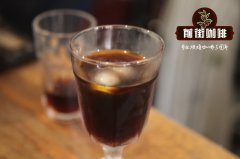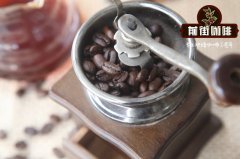Coffee cold knowledge | which is sweeter, coffee semi-sugar or monosaccharide? The difference between monosaccharides and semi-sugars turns out to be...

Professional coffee knowledge exchange more coffee bean information please follow the coffee workshop (Wechat official account cafe_style)
Carbohydrates in coffee
We put the chemical composition of coffee primarily on carbohydrates, which make up 50% of the weight of raw beans, which you might associate with "sugar", so some people think that coffee beans should be extremely sweet, just like candy. However, most of the carbohydrates in coffee are polysaccharides, not sweet, but after the change, it will stimulate our perception. The most representative carbohydrates in coffee are as follows:
1. Arabinogalactan
two。 Mannan
3. Cellulose
4. Raffinose
5. Stachyose
In terms of the above-mentioned chemical content, there is not much difference between Arabica coffee beans and robusta coffee beans, but robusta coffee beans contain 3% more arabinogalactan than Arabica coffee beans, even logically, you might think that Arabica coffee beans should have a higher content. In addition to being unsweet, some carbohydrates do not play a role in aroma formation during baking, but they undergo dramatic degradation and compression of derivatives that can increase the Body of coffee.
However, raw beans also have 7-10% monosaccharides, some of which are very sweet, but unfortunately, many monosaccharides bind to nitrogen compounds or are destroyed during baking, and if not, even extreme sweeteners do not need to add sugar to their coffee. Monosaccharides include dimers and monomers, in which sucrose is the most important, produced by a combination of glucose and fructose. The content of glucose in raw beans (0.18%) is about 10 times that of fructose (0.02%), but in the baking process, they are all produced by sucrose. Other monomers, including galactose, mannose and arabinogalactan, are indicators of fruit ripening.
Technical relevance and thermal response
Structural polysaccharides, like cellulose, give coffee beans a special structure, and they are relatively stable when roasted, even if they are reduced in the degree of polymerization. At 130C ℃, sucrose has begun to break down to form a dye and decompose into two basic substances (fructose and glucose). As a result, 90% of sucrose disappears at shallow baking, while there is no sucrose at further baking. Galactose, mannose and glucose remain even after baking, while arabinose is the least heat-resistant, with about 60% lost during baking. relatively speaking, the loss of mannose is about 20%, 35%, and 30%, respectively. the loss rate of glucose is as low as 10%. In addition, the loss of mannose is proportional to the roasting degree of coffee beans; the other two (galactose and glucose) are lost rapidly at the initial stage of baking, but the subsequent baking process is stable.
The full text is translated from Italian Coffee tasting Conference-Italian Coffee roasting
Recently, I have been thinking crazily about how to make the sweetness exceed the standard, and have an excellent sense of balance and level. this is really fun.
Important Notice :
前街咖啡 FrontStreet Coffee has moved to new addredd:
FrontStreet Coffee Address: 315,Donghua East Road,GuangZhou
Tel:020 38364473
- Prev

Ice drop coffee English Dutch Coffee ice drop coffee beans recommend the production method of cold extract coffee
Professional coffee knowledge exchange more coffee bean information Please follow the coffee workshop (Wechat official account cafe_style) Ice drop Coffee utensils, originally made in the Netherlands, so it is also known as Dutch Coffee (Dutch Coffee), or drop Coffee (Water Drip), Cold brewed Coffee (Cold Brew). Coffee is very popular because of its supple taste and long finish.
- Next

Why is a hot drink with the same sweetness more sugar than a cold drink? Is Luckin Coffee half sugar sweet?
Professional coffee knowledge exchange more coffee bean information Please pay attention to the coffee workshop (Wechat official account cafe_style) hot cocoa, hot milk tea, hot coffee is very warm, but many people do not know that these hot drinks contain amazing sugar content. If you have a sweet hot drink in winter, it immediately makes people feel warm all over. However, although the sweet hot drink is delicious, it also makes people drink it unconsciously.
Related
- Beginners will see the "Coffee pull flower" guide!
- What is the difference between ice blog purified milk and ordinary milk coffee?
- Why is the Philippines the largest producer of crops in Liberia?
- For coffee extraction, should the fine powder be retained?
- How does extracted espresso fill pressed powder? How much strength does it take to press the powder?
- How to make jasmine cold extract coffee? Is the jasmine + latte good?
- Will this little toy really make the coffee taste better? How does Lily Drip affect coffee extraction?
- Will the action of slapping the filter cup also affect coffee extraction?
- What's the difference between powder-to-water ratio and powder-to-liquid ratio?
- What is the Ethiopian local species? What does it have to do with Heirloom native species?

